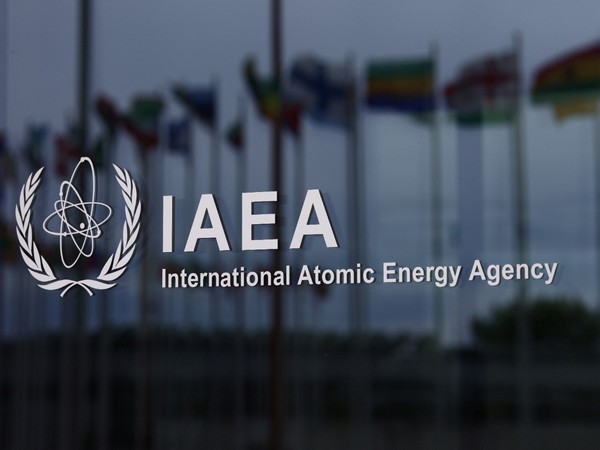IAEA Mission sees progress in nuclear and radiation safety in UK, identifies areas for improvement
In the UK, nuclear and radiation technologies are used in various sectors for energy production, healthcare, industry and research.

- Country:
- United Kingdom
An International Atomic Energy Agency (IAEA) mission said the United Kingdom has a strong commitment to nuclear and radiation safety and has made progress to reinforce its regulatory functions. The team also identified areas for further enhancements, including the need to effectively recruit and retain regulatory specialists and inspectors.
The Integrated Regulatory Review Service (IRRS) follow-up mission was conducted at the request of the UK Government and took place at the headquarters of the Health and Safety Executive (HSE) and Office for Nuclear Regulation (ONR), in Bootle, near the city of Liverpool. Its purpose was to evaluate the implementation of 24 recommendations and 19 suggestions provided during the initial IRRS mission in 2019.
IRRS missions are designed to strengthen the effectiveness of the national nuclear and radiation safety regulatory infrastructure, based on IAEA safety standards and international good practices, while recognizing the responsibility of each country to ensure nuclear and radiation safety.
The IRRS team – comprised of seven senior regulatory experts from seven IAEA Member States, three IAEA staff members, and one observer from Canada – held interviews with 13 regulatory authorities included within the scope of the review.
In the UK, nuclear and radiation technologies are used in various sectors for energy production, healthcare, industry and research. The country’s nine nuclear power reactors provide just over 14 per cent of the country’s electricity. The UK Government recently announced its plans to quadruple UK nuclear power by 2050.
In healthcare, nuclear and radiation technologies are employed for medical imaging, cancer treatment and diagnostic procedures, enhancing patient care and disease detection. Furthermore, nuclear technologies play a crucial role in industrial applications, such as non-destructive testing and sterilization processes. Universities and research institutions in the UK use accelerators, reactors and other facilities for nuclear physics, materials science and various scientific experiments.
The IRRS team said that since 2019, the UK regulatory bodies involved in the review have shown a strong professionalism and commitment in carrying out their mandate to nuclear and radiation safety in the UK. Of the 24 recommendations and 19 suggestions made in 2019, 19 recommendations and ten suggestions have been successfully addressed and closed. Notable achievements included:
The establishment of the Radiological Safety Group, an overarching coordination group, which consists of senior officials from all government departments and regulatory bodies having responsibilities for radiological safety, and the associated Radiological Safety Working Group.A new requirement under which an applicant must submit a safety assessment to the regulator before obtaining an authorization to operate a facility or conduct an activity with radiation sources.
The Environment Agency introduced a new nuclear Radioactive Substances Regulation business planning process to ensure a graded approach to safety inspections.
The UK developed a new framework for facilitating national-level contribution and communication of IAEA safety standards updates.
“This IRRS follow-up mission demonstrated that the UK has made continuous improvements since the IRRS 2019 mission to the highest standards of nuclear and radiation safety,” said Ramzi Jammal, acting Chief Executive Officer of the Canadian Nuclear Safety Commission, and the Team Leader for the IRRS follow-up mission. “The findings of the mission will contribute to the ongoing efforts to ensure a robust regulatory framework for the benefit of the public and the environment.”
Four good performances were recognized by the team in its reports. These included:
The Openness and Transparency Policy of ONR.The decision to commission an independent and transparent assessment of ONR’s culture and to publish the assessment report.The establishment of a nuclear site resource prioritization tool by the Environment Agency (EA).The UK regulatory framework Draft Standards and Guidance Status Spreadsheet, which facilitates the national coordination in relation to the IAEA safety standards updates.“We thank the IRRS mission team members for productive discussions on the UK’s radiological safety framework,” said a spokesperson for the Department for Energy Security and Net Zero. “We are committed to maintaining the highest nuclear safety standards and are grateful for the hard work of our government departments and regulatory bodies across the four nations of the UK in helping to make the mission a success. It comes at an important moment for British nuclear as the Government recently set out plans for a revival to deliver up to 24 GW by 2050. This will require a robust regulatory framework and significant work has already been done by UK regulators to develop their approach and work more closely with international partners.”
In its report, the team made six new findings consisting of four recommendations and two suggestions in relation to the topics covered during the IRRS initial mission. In particular, the team noted that the inability to recruit and retain specialists and inspectors has had an impact on the regulatory processes of some bodies and recommended a pay reform where required in order to ensure the statutory remit is delivered.
At the closing session, Anna Hajduk Bradford, Director of the IAEA Division of Nuclear Installation Safety, emphasized the collaborative spirit of the mission. “This comprehensive review underscores the commitment of the UK to enhancing its nuclear and radiation safety measures,” she said. “I commend the UK for requesting the mission.”
The final mission report will be provided to the Government in about three months.
IAEA Safety Standards
The IAEA Safety Standards provide a robust framework of fundamental principles, requirements and guidance to ensure safety. They reflect an international consensus and serve as a global reference for protecting people and the environment from the harmful effects of ionizing radiation.
- READ MORE ON:
- IAEA
- United Kingdom










